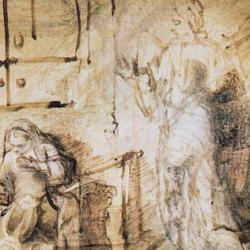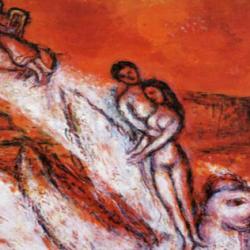In a 2011 JBL article, Kyle Harper examines the usage of the Greek word porneia from its classical uses through the New Testament and into the early church. He hopes to specify its meaning, since the usual English translation as “sexual immorality” is “so vague” that it “inevitable threatens to become little more than a cipher for the interpreter’s own views” (365).
Harper shows that Greek sexual norms were quite different from later Christian ones. “Adultery” (moicheia) did not mean extra-marital sexuality but “violation of a respectable woman” or “violation of a woman’s honor,” and it was construed in such a way that “moicheia was a crime against another man” (367). A married man was perfectly free to have sex with his female (or male) slaves, since the slaves’ bodies “were completely vulnerable to the master’s sexual advances. The place of slavery in the sexual landscape of classical antiquity could hardly be overestimated.” The slave trade was in fact “driven by the demand for commodified sexual availability” (368).
For ancient Greeks, prostitution was not merely tolerated but seen to fulfill a social good. It allowed men to satisfy their sexual desires without violating honorable women, that is, without the danger of rivalry with another man (368). The actual term porneia is very rare in the classical world, and when it is used it has an active sense: “Porneia means ‘the practice of selling access to one’s body. Porneia, in classical Greek, refers to the activity of the seller. . . . the pornos is a gigolo, not a john” (369). A male might be a pornos, but only if he’s the seller; a man who seeks out a prostitute isn’t committing porneia at all, nor adultery for that matter.
One key to the transformation of the term was its metaphorical use by the prophets, who described idolatry as spiritual adultery. This was an epochal shift, since it “allowed spiritual fornication to be used with acts of male commission. . . . In Hosea we first see men committing fornication, albeit of the religious variety” (370). Among Jews during the Second Temple period, porneia came to include the action of the man seeking out a prostitute: “prostitution became an illegitimate form of sexual practice, for male customers and female professionals alike” (371). Sirach provides evidence that the term had expanded further: It now covered “a broadly conceived range of sexual vice” and was in the Testaments of the Twelve Patriarchs as a “catchall vice for any sexual transgression” (371-2). In the prophets and later Jewish texts, we see a reversal of “the gender dynamics” that were inherent in the original Hebrew term for adultery. And this “reversal would feed back into the sexual sense of the term, so that sexual fornication became an act that men could commit” (370).
By the time we come to the New Testament, then, the term already “condensed the cultural differences between the observers of the Torah and Gentile depravity.” Its use to describe the “types of sexual license permitted in Gentile culture [was] practically inevitable” (375).
Harper, “Porneia: The Making of a Christian Sexual Norm,” JBL 131:1 (2011): 363-383.















